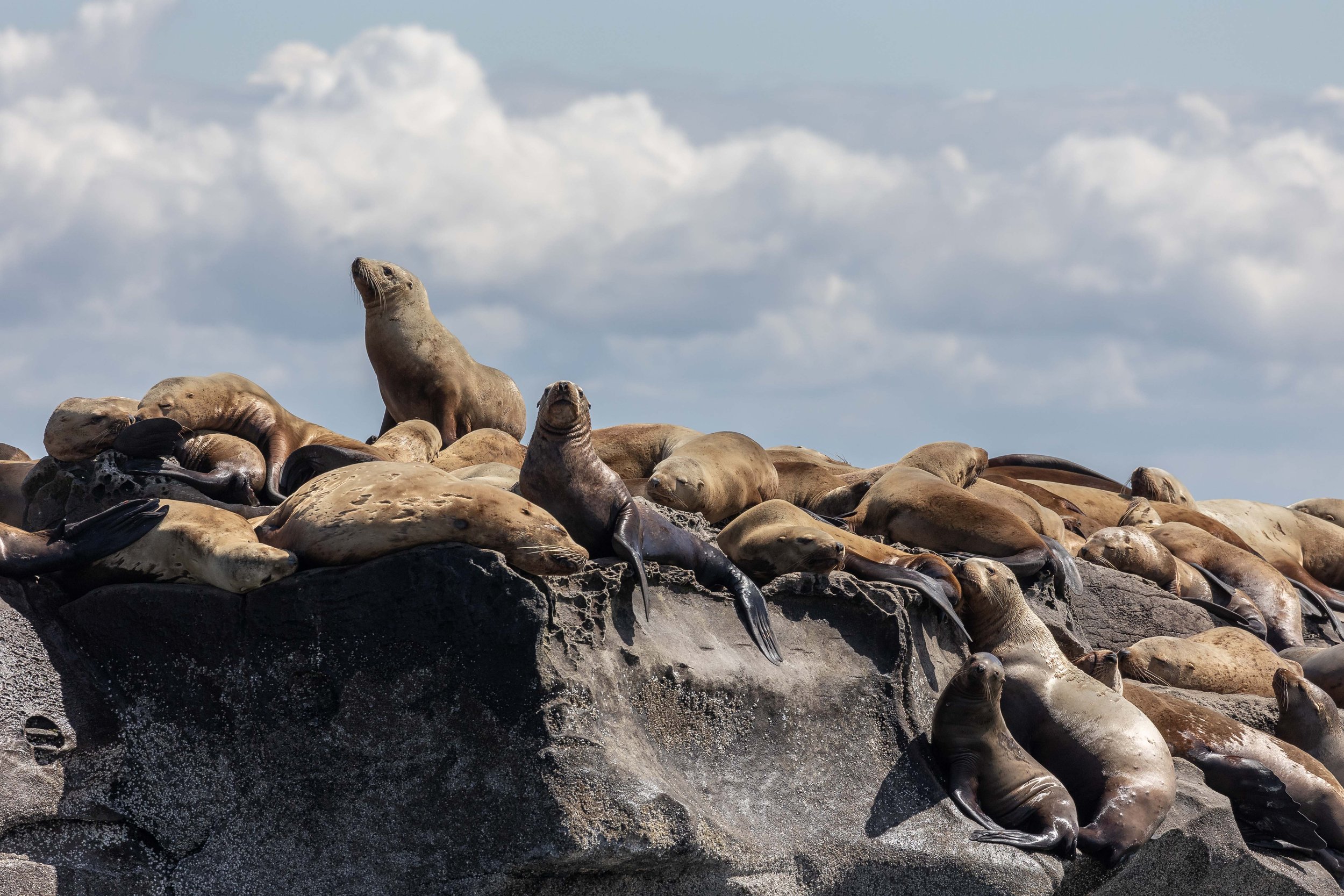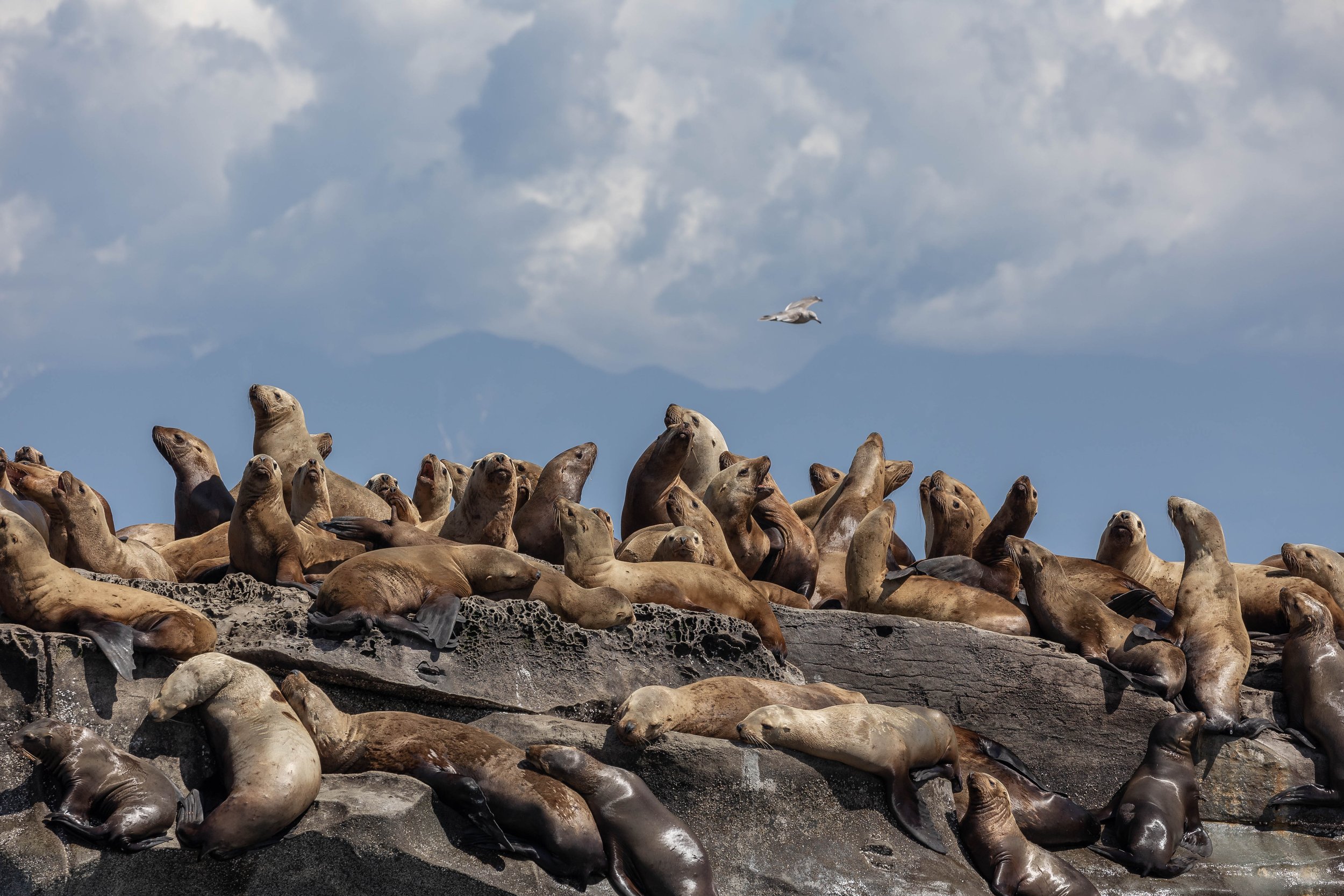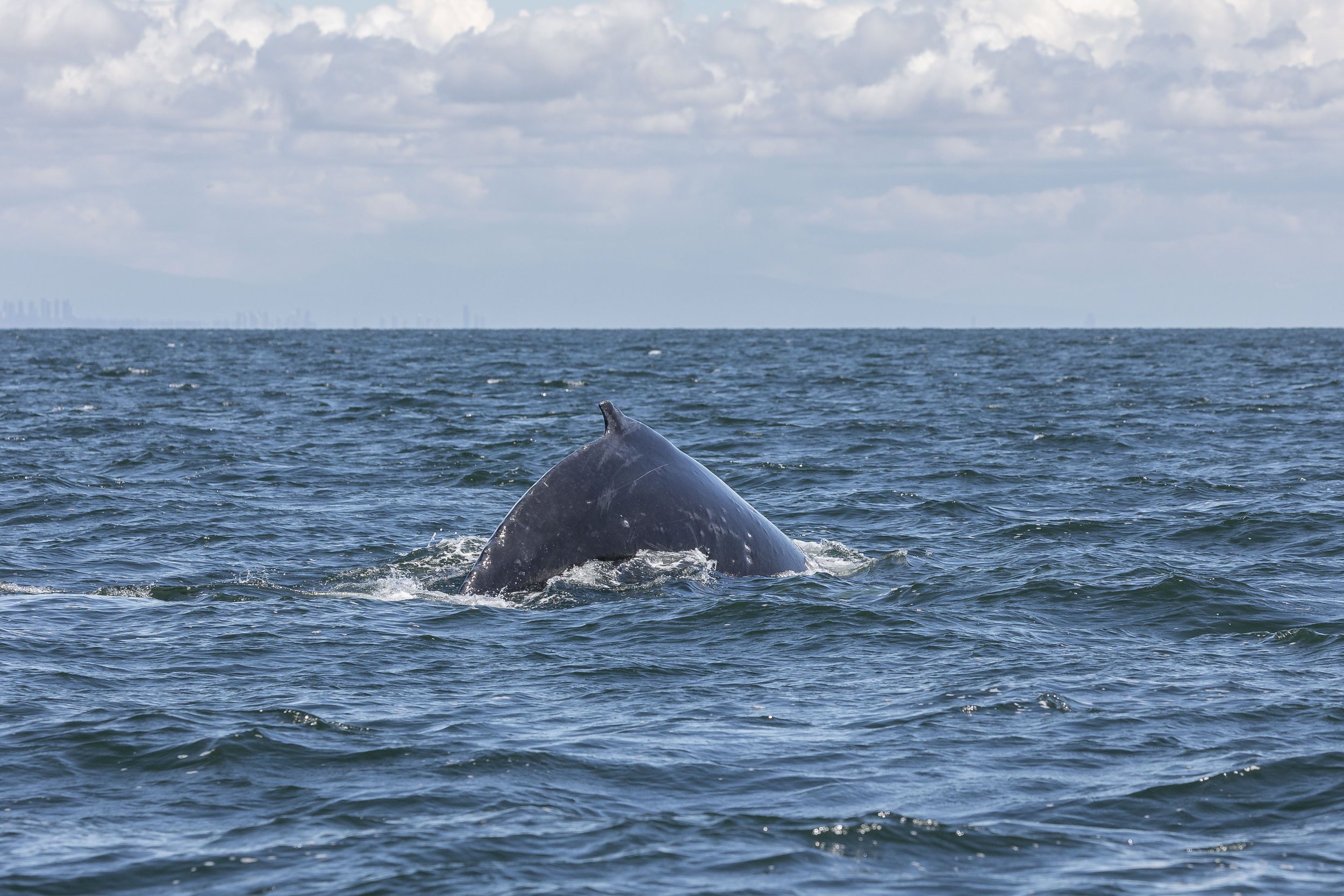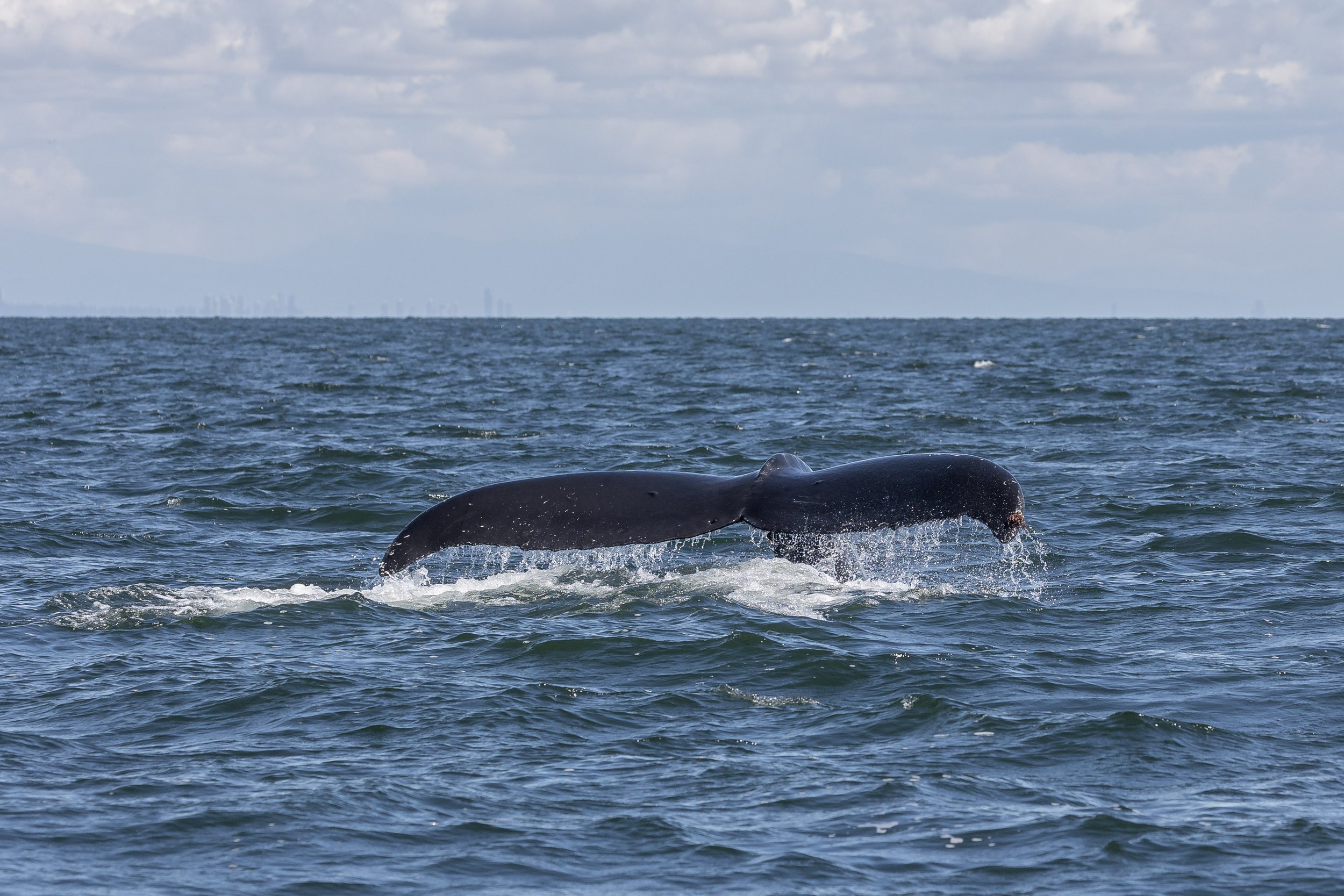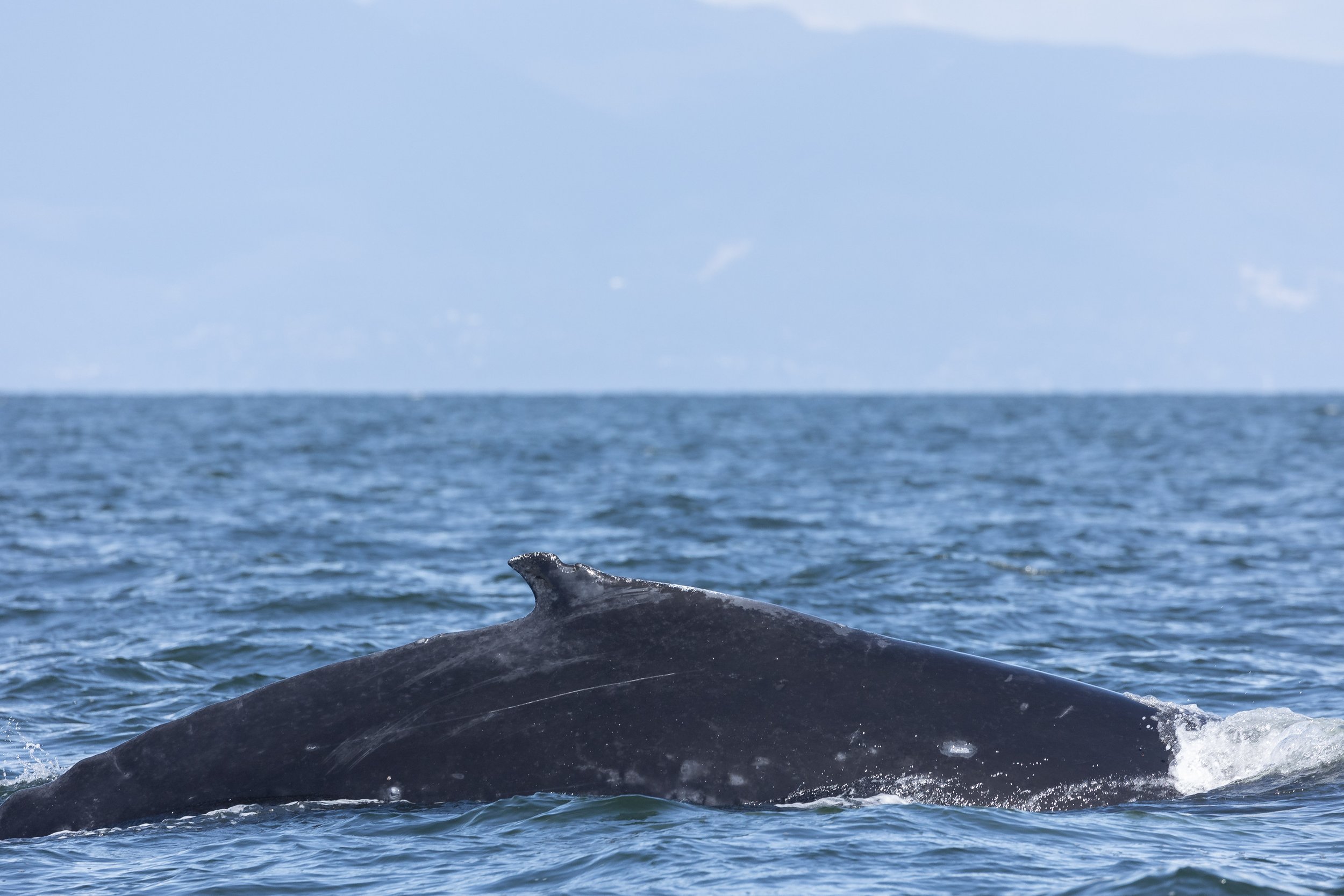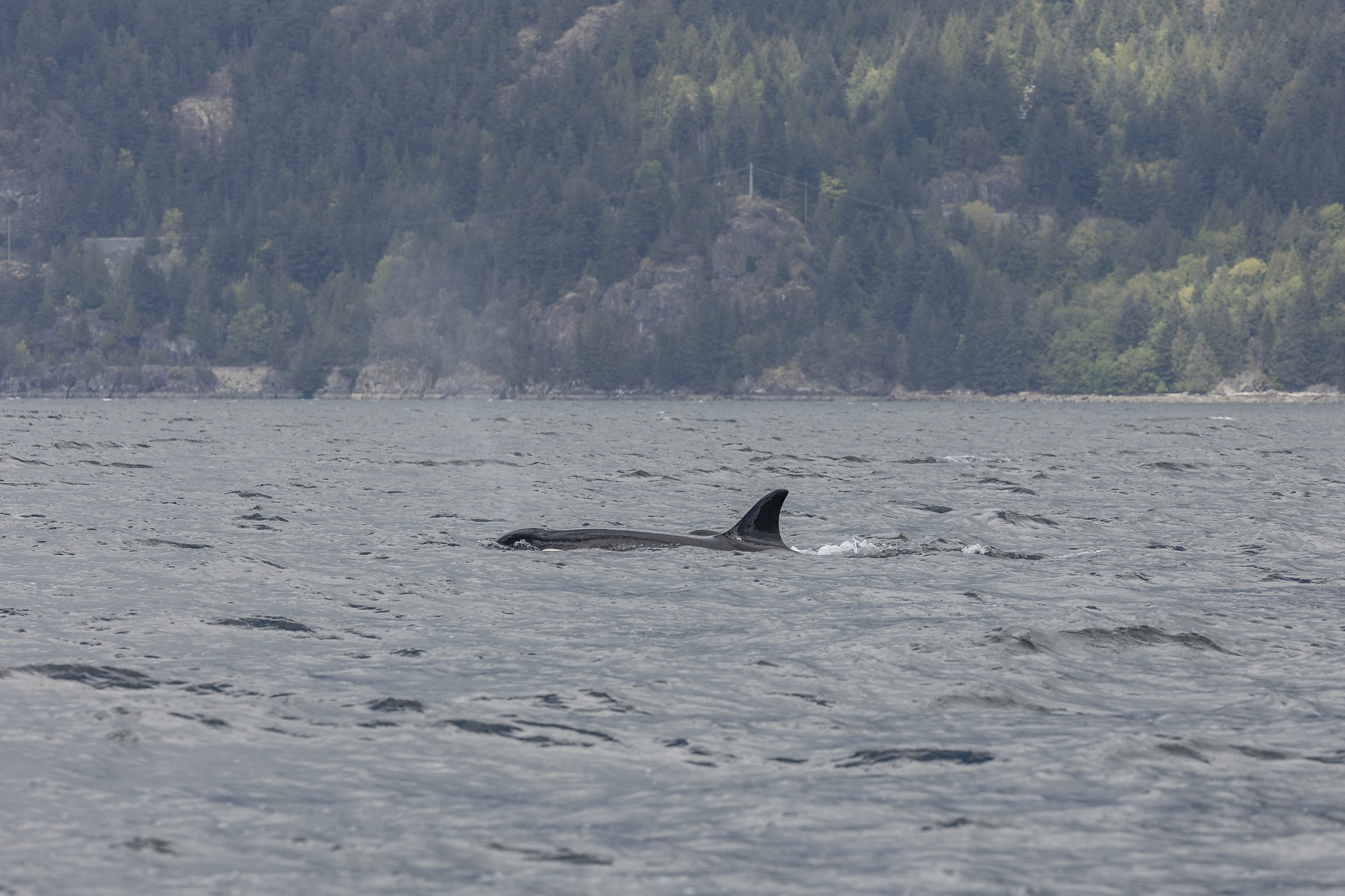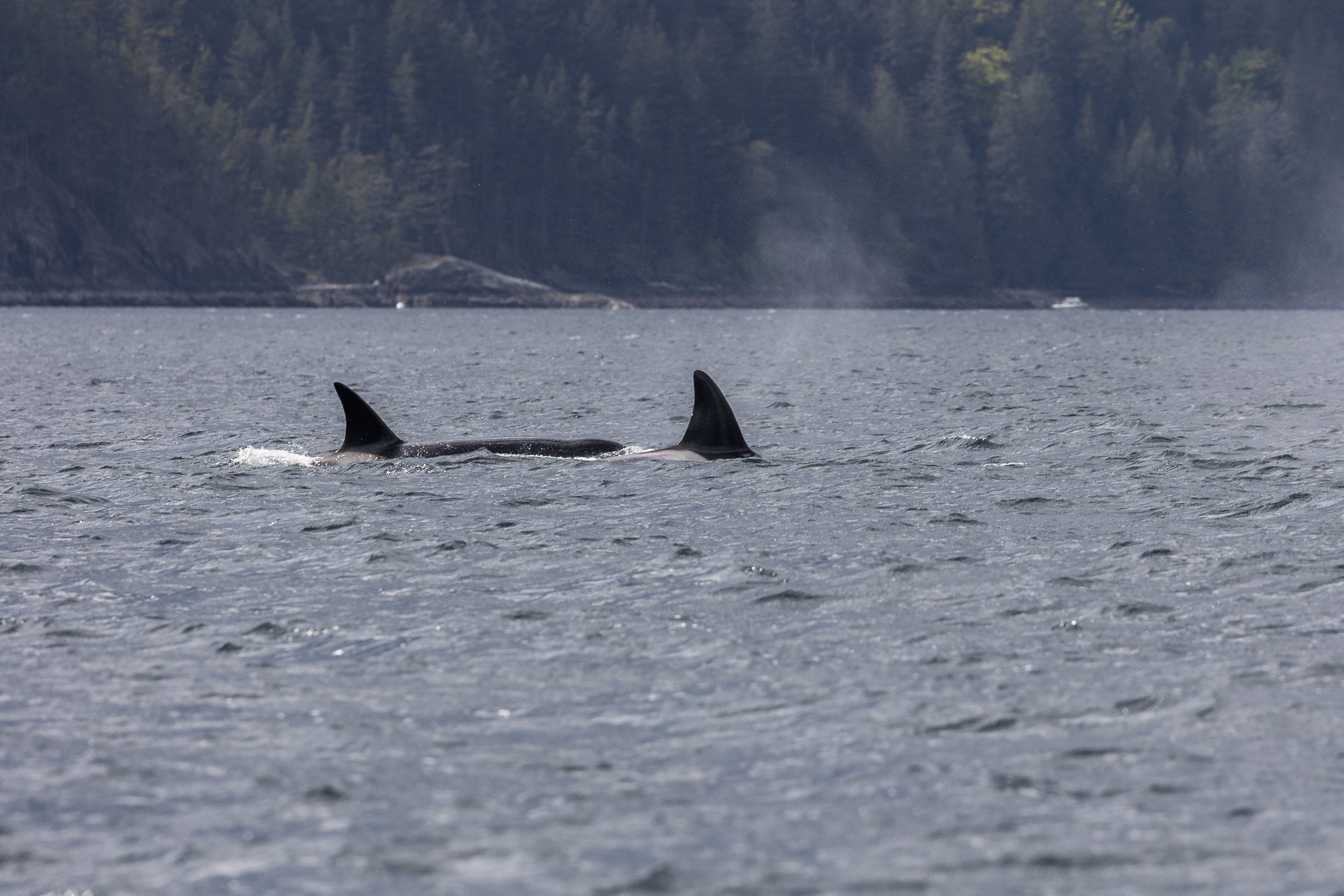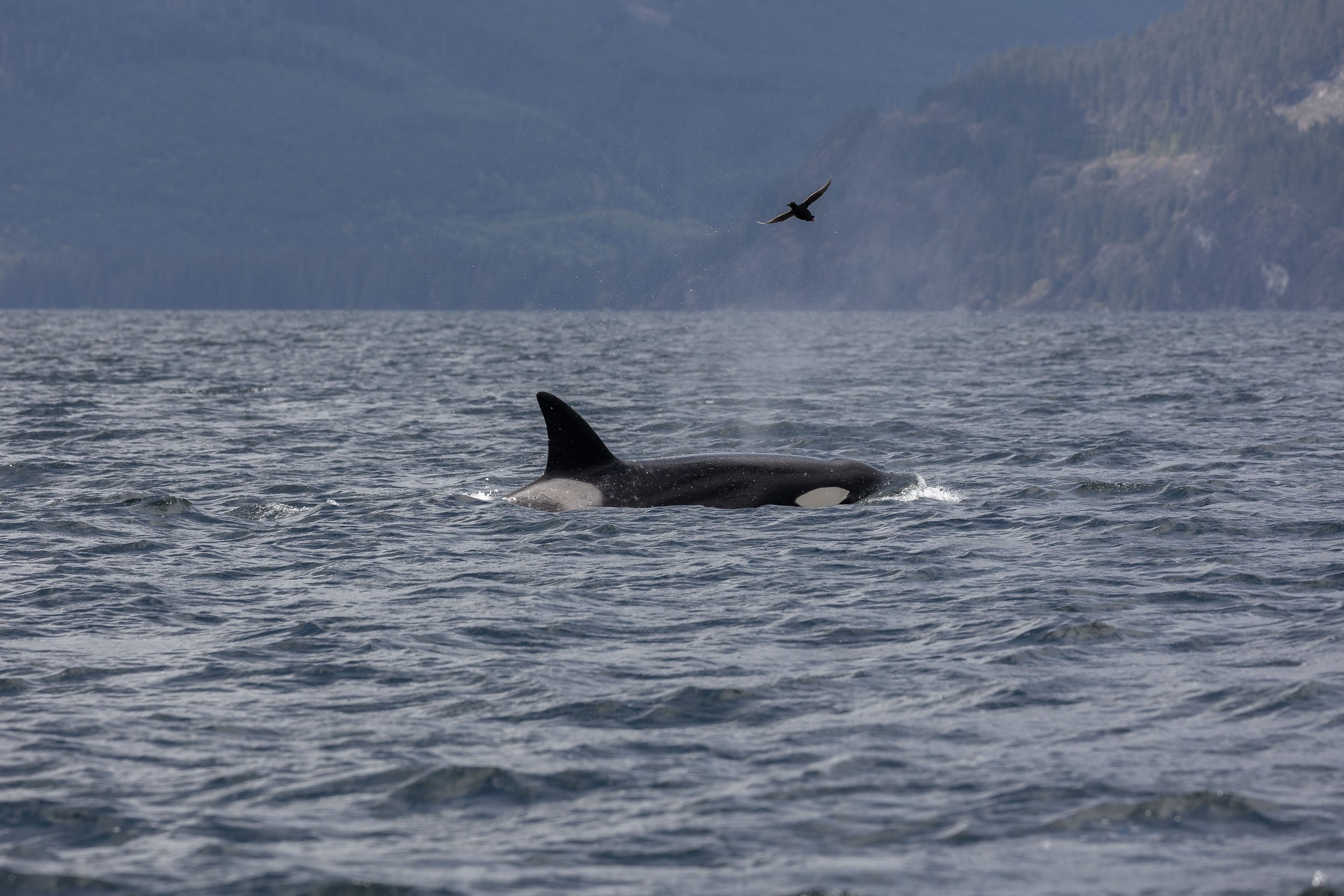May 1, 2024 - A new month, perfect for a double species day!
It was a double species day in the Salish Sea! One of our zodiacs headed out of the harbour and went south in search of whales. We took what we call the inside passage through the Gulf Islands before deciding to try our luck in the Strait of Georgia. We made a quick stop at Stinky Rocks for a view of some Steller Sea Lions. This is a favourite haul out for them during our winter and spring before they head up to Alaska for their breeding season. We call this Stinky Rocks because sea lion feces is remarkably pungent, it’s hard to ignore the smell!
Out in the Strait, we stumbled across two Humpback Whales! Around this time of year, they’re starting to come back from their breeding grounds in either Hawaii or Baja/Mexico. Oddly enough, one of the humpbacks who spend their summer here around Vancouver Island has been recorded migrating to islands south of Japan! That’s a total round trip of 15,000 kilometres! However, most of our whales don’t migrate that far. One of the whales we found today was identified as BCY1218 Kata, and the other was
Moraine (Glaciers 2021 calf). Although most of the humpbacks in these waters are catalogued, sometimes they like to surprise us. The way we identify these whales is primarily by using the underside of their tail flukes. Each fluke has a unique pattern of black and white, and we use that to identify each individual. We can also use their dorsal fins if there is a distinctive shape or scar.
After watching the Humpback Whales, we headed north into Howe Sound. Here, we found two pods of orca travelling together! Just like with the humpbacks, we can identify each orca individually. Unlike humpbacks, we use the dorsal fin and the white saddle patch behind it. Today, we found:
T023C Cindy/Freshwater ♀ (1990)
T023C3 Durban ♀ (2009)
T023C4 Bunzie (2013)
T023C5 (2018)
T023C6 (2023)
T124D Field ♀ (1996)
T124D1 Salish II (2014)
T124D3 (2022)
The “T” in the ID number stands for Transient, which is an ecotype of killer whale that only eats marine mammals such as seals, sea lions, and small cetaceans. We also call them Biggs Killer Whales, named after researcher Michael Bigg. In the 1970s when captures for aquariums were still legal, Michael Bigg was tasked with estimating how many orcas there were in the Salish Sea available for capture. While on his mission, Bigg noticed that the dorsal fins and saddle patches were different on each whale. He used these differences to count the orcas in the area and eventually determined that there were not enough orcas to continue capturing. During his mission, Bigg designated each pod with the letter T and a number (such as 23 and 124). T023 was the 23rd whale identified, and T124 was the 124th, and so on. Then, each calf gets a letter. So the first calf would be A, the second calf would be B, and so on. So today, we saw the third calf of T023 and the fourth calf of T124 and their respective families.
After watching these orca for about an hour, we left them behind to continue their day and headed back across the Strait of Georgia to Nanaimo.
Check out the photos from the trip taken by our naturalist Hayleigh Hilbert!
An adult bald eagle perches on Stinky Rocks.
Did you know an eagle can rotate it’s head 270 degrees?
Steller Sea Lions at Stinky Rocks. These are the biggest sea lions in the world!
A brave gull flies over the Sea Lions at Stinky Rocks.
Some of them decided to have a pool party!
An interesting angle of BCY1218 Kata. You can see their two blowholes on the right.
We know Kata is going down for a dive because they arched their back like this.
Kata’s flukes. Can you spy Vancouver in the background?
Kata’s beautiful white flukes.
This whale is Moraine! Their dorsal fin was unique enough for us to use it to ID them.
Another shot of Moraine.
Kata is in the front with Moraine surfacing behind.
A nice close up of Kata. Those white circles are likely bites from cookie cutter sharks! We don’t have any in British Columbia as they are tropical sharks.
Kata going down for another dive.
T123C5 surfacing with another behind.
T023C Cindy/Freshwater the matriarch.
T124D Field the other matriarch.
T023C Cindy/Freshwater with her 2023 calf T023C6.
T124D Field with her 2022 calf T124D3 in tow.
T023C3 Durban followed by T124D1 Salish ll.
T124D Field in front of T023C3 Durban.
T124D Field following T023C3 Durban.
T124D Field with T124D3 just breaking the surface.
Family photo! T124D Field in the lead with T124D3 and T124D1 Salish II behind her.
T023C Cindy/Freshwater with T023C6 making a splash in front of her!
T023C3 Durban.
A colorful male and brown female Surf Scoters.
Harbour seals being “rock sausages.”
They blend in so well to the rocks!
Cormorants spaced out nicely, they like their space a little more than the Sea lions!



